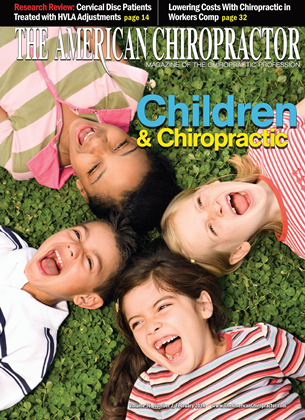Cardiovascular disease, diabetes, and Alzheimer's or dementia consistently are ranked in the top five chronic diseases. But how common is this? More than half of Americans suffer from one or more chronic diseases, which would suggest that more than half of your patients currently could be diagnosed with a chronic disease. The common approach to addressing a chronic disease is to manage the organ manifesting the symptom. Those with Alzheimer's need brain support. Those with diabetes need pancreas support. This is necessary for both support and restoration, but it doesn't always address the root cause of the problem. In my experience, the most effective approach is to focus on the heart. The body works together as a whole, not an individual structure, organ, gland, or cell functioning in isolation—what affects one area ultimately affects another. The heart is the primary organ necessary for survival. In reality, everyone dies of heart failure. One can be brain dead but still considered alive until the heart stops. To protect and sustain life, the heart has main backup systems. Each system will work to balance and support the needs of the heart structurally, emotionally, and nutritionally/chemically. One of the main backup systems of the heart is the brain. If it is ovcractivc. as in the case of those with anxiety, attention deficit disorder, or sleep issues, it may be an indication that the brain is working hard to support a "tired heart." If it is undcrac-tive. as it is with those who have memory or learning problems, this may indicate that the stress of compensating for the heart has been going on for a long time. Therefore, if someone is suffering from Alzheimer's, dementia, or other memory issues, it is important to support the heart and its backup systems nutritionally and structurally. In the case of diabetes, the pancreas often has sacrificed for the heart. When the heart tires and fails to make sufficient cncrg> and its own hormones, an emergency demand is put on the pancreas to produce more insulin, a protein hormone that enables cells to take in and use blood sugar for life-sustaining energy for the heart (brain, nervous system, muscles, etc.). Over time this demand on the pancreas can result in a "tired" and "worn out" pancreas than can no long make insulin, or a body that has become "injured" and insulin resistant due to the overwhelming demand. The patient is now diabetic and some other organ has to support the heart, or heart symptoms and syndromes will become apparent. To address chronic diseases by supporting the heart also means to maintain its backup systems structurally and nutritionally. The main areas of structural support for the heart arc the feet. Tl-5. and T8. which is the head of the immune system. Nutritional support consisting of vitamins, minerals, amino acids, and enzymes should be for the overall heart and circulator}- system (chambers, valves, arteries, veins, blood). This should also include backup systems such as the brain, thyroid, adrenals, pancreas, ovaries/testicles, uterus/prostate, pancreas, shoulders, hips, and spine. Chiropractic offers hope to those suffering with chronic diseases. It gets to the heart of the matter for vitality and wellness. Dick I ersendaal has been called a "pioneer of chiropractic ". He studied under RJ Palmer at Palmer College of Chiropractic where he developed a solid chiropractic foundation. Over the years he developed Contact Reflex Analysis, a technique that addresses the subluxation complex (trauma), nutritional imbalances (toxins), and emotional (autosuggestion) causes of dis-ease. llsit wwwX^K lwellness.com for a list ofCRl seminars. ]lsit www. lerl ltaProducts.com to view the nutritional and essential oil line he developed to address these issues with minimal inventory. Dawn Hoezee, MA is the daughter of Dr. Dick I ersendaal and owner ofCRA U'ellness. She is well known for her skill at organizing, interpreting and then teaching the genius gleaned from her father \s brain in a manner that is both engaging ami practical. Together they make a dynamic team.
 View Full Issue
View Full Issue









